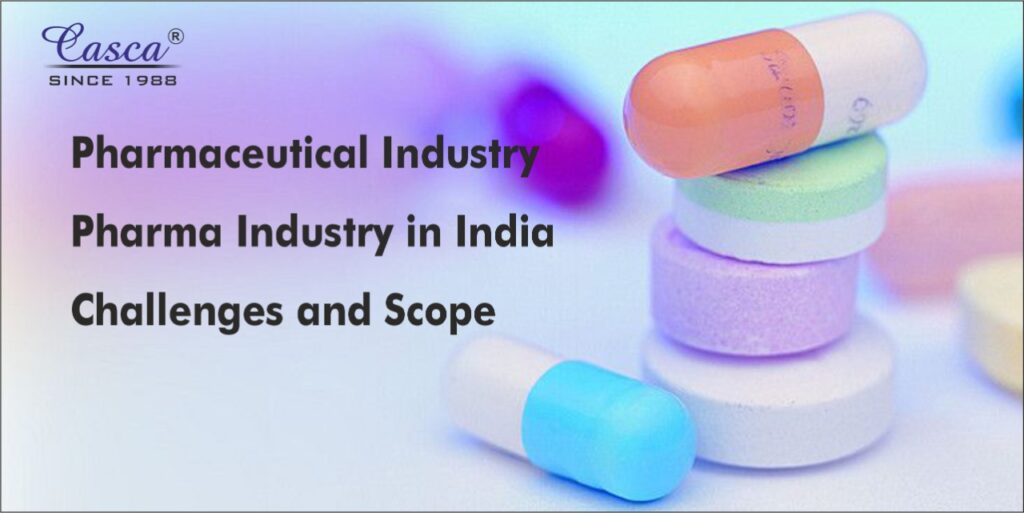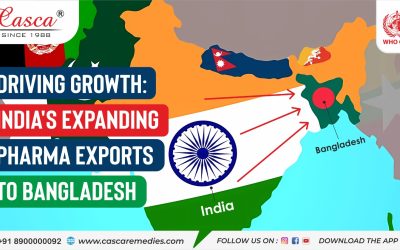Challenges and Scope of Pharmaceutical Industry in India

The research, development, and production of pharmaceuticals and medications are considered to be the core activities of the pharmaceutical industry. It is pervasive and includes research, chemicals, regulation, and participation from government organizations. The pharmaceutical industry, however, has different features depending on the location and region.
Pharmaceutical businesses make significant financial investments to develop and produce pharmaceuticals for patients. Patients and healthcare professionals (doctors, nurses, hospitals, nursing homes, clinics, and so on) rely on these companies to treat ailments.
These businesses conduct research on the illnesses, build innovative and create new treatments for them. Drug discovery and marketing are significant expenses for these companies. Pharmaceutical businesses utilize patient medical information and reports in order to conduct research and develop new medications.
Pharmaceutical firms typically trade in brand or generic drugs as well as medical equipment. All nations have different laws and rules that apply to pharma products. The pharmaceutical sector has grown to be a significant and extremely complicated company as a result of the numerous compliance that must be followed in order to follow law and procedure.
Outsourcing has emerged as a defining feature of the sector. In other words, a lot of businesses hire specialized manufacturers or research organizations to handle specific stages of the drug development process on their behalf. Others strive to keep the majority of the procedures within their own organization.
Pharmaceutical Sector around the world
To begin, let’s consider the pharmaceutical sector in Europe. The European Medicines Agency and EU-wide regulations, which center on the packaging, safety, transparency, and authorization processes, govern this sector.
Bayer is Europe’s largest pharmaceutical firm, and prescription medication is most commonly used by women and the elderly. The estimated 35.2 billion euros that pharmaceutical companies spend on R&D in 2017 is still rising, indicating a bright future for this sector in Europe.
Then there’s Africa’s pharmaceutical industry. In this region, the industry is predicted to grow significantly and reach a value of $40 to $65 billion by 2020. This expansion is being driven by urbanization, increased healthcare capacity, and a more favorable business environment.
Modern medications are available for urban households to use, healthcare is becoming more effective, and governments have implemented pricing controls and import quotas across the continent. In order to decrease the demand for imports, some governments are also thinking about encouraging increased domestic drug manufacture.
Although growth in the pharmaceutical business is projected in Latin America, the market is difficult to forecast due to relatively fewer data points available than in other regions. Brazil, Argentina, Mexico, and Colombia are anticipated to see the highest growth. Brazil and Mexico are global pharmaceutical powerhouses. Colombia has the potential to lead the pharmaceutical sector in Latin America
The USA, last but not least. Prescription medications are used by 119 million Americans. The pharmaceutical sector in the United States underscores the enormity of this figure.
It controls about half of the pharmaceutical market. Pfizer is the largest pharmaceutical corporation in the US, with total revenues of $53.6 billion. The United States Food and Drug Administration is in charge of overseeing medications before they are made available to the public.
Evolution of the Pharmaceutical Industry in India
The growth of the Indian pharmaceutical industry can be outlined through four stages. Prior to 1970, when there was minimal domestic competition and foreign firms controlled the Indian market, it is known as the first stage.
The second stage encompasses the years 1970 to 1990. In this period there were many homegrown enterprises begun. During this time, the Indian Patent Act of 1970 was passed and export initiatives were launched.
The third phase spanned the years 1990 to 2010. The liberalization encouraged Indian companies to start doing business overseas.
The fourth stage is marked by the amendment of The Patents Act in the year 2005. India became a significant producer of generic medications during this time.
India is the world’s largest provider of generic medications by volume, accounting for 20% of total worldwide pharmaceutical exports. With more than half of all vaccines produced worldwide, it is also the leading vaccine manufacturer globally in terms of volume.
Currently, in terms of volume and value, the Indian pharmaceuticals market is the third-largest in the world. It has established itself as a hub for industry and research on a global scale. A substantial supply of raw materials and access to a skilled staff provide the company a distinct competitive advantage
As of 2021, the majority of medicines manufactured in India are low-cost generic drugs, which account for the majority of India’s pharmaceutical exports. In light of the ongoing pandemic’s
Future Prospects
The pharmaceutical business will continue to thrive both internationally and in India. The high prevalence of disease, the steady rise in individual disposable incomes, the development of the healthcare infrastructure, and healthcare financing all support the industry’s outlook for the future. Health insurance and medical technology advancements can help the pharmaceutical business thrive by eliminating both financial and physical barriers to healthcare access in India.
Over the past five years, the Indian pharmaceutical business has expanded at a compound annual growth rate (CAGR) of over 15%. Companies must adapt new business strategies and come up with unique approaches to ensure the maximum achievable consumer satisfaction.
Through partnerships and agreements, Indian pharmaceutical businesses may continue to expand both organically and inorganically. They should, however, continuously strive to improve operational efficiency and production.
The pharmaceutical industry is expected to adapt and evolve throughout time because it is primarily driven by profits and competition, with each company seeking to be the first to discover treatments for different diseases.






